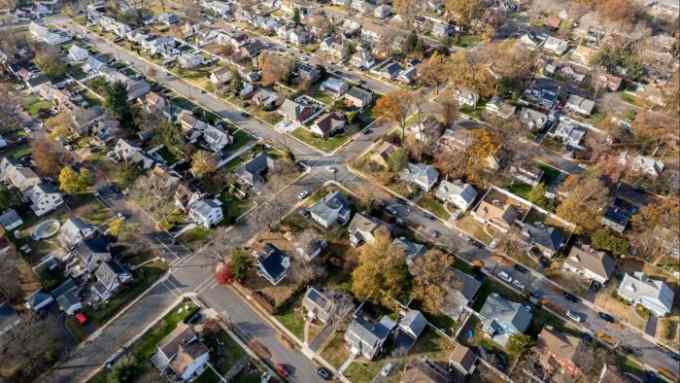Floating-rate exposure set to cause more balance-sheet pain

Roula Khalaf, Editor of the FT, selects her favourite stories in this weekly newsletter.
The quick ascent of short-term interest rates since 2022, amid high inflation and resilient economic growth, has put borrowing costs in developed markets at multi-decade highs. This has put pressure on the balance sheets of a broad array of leveraged companies that have borrowed heavily using variable-rate debt.
The number of companies exposed to rising borrowing costs has grown over the past two decades as more corporate borrowers have turned to the loan market to raise floating-rate debt — rather than issuing bonds that would fix their borrowing costs for years, or decades.
This trend has accompanied the rise in private equity-owned companies, which tend to borrow from the broadly syndicated loan market and collateralised loan obligation (CLO) funds — or, increasingly, from private lenders such as Blackstone Group, Apollo Global, and Ares Management.
Since the global financial crisis, the size of the market for CLOs has grown almost fourfold: to nearly $1tn, according to Bank of America. It “has grown in step with the bank loan market and expanded at a quicker pace than other credit market sectors”, points out research from Guggenheim Investments. Analysts at Morgan Stanley predict that the private debt market will more than double in size by 2027, to $2.3tn globally.

This rise in loan use has mostly come during an era of low interest rates, which has long since ended — creating challenges for many borrowers, particularly those carrying single B debt ratings or lower. These pressures are mitigated, however, by a loosening of creditor protections over the past decade, which has given companies more flexibility to operate through short-term economic challenges.
But those loosening covenants have also allowed many borrowers to avoid buying hedges to insure their floating-rate debts against rising rates — a decision that may now prove costly.
“People went into this interest rate rise unhedged — and hedging is expensive,” says Tim Hynes, global head of credit research at Debtwire. “Ultimately, some companies are going to have a difficult time.”
The rise in interest costs has hit most sponsor-backed companies, but has had the greatest impact on lower-quality borrowers by eating away at the cash flows they use to service debts.
Moody’s analysts have warned that, by the end of this year, more than half of single B minus rated US companies will not be generating enough cash to cover their capital expenditure while servicing their debt. That means those businesses will be forced to dip into their cash reserves to cover their spending.
The interest coverage ratio for these companies — the extent to which operating earnings cover interest payments — could reach 0.91 by December, from 1.32 at the end of 2022, according to Moody’s, and could fall further still. A figure below 1 indicates that earnings are not sufficient to cover interest costs.
“Once your capital structure is cash flow break-even, it becomes very vulnerable to any reductions in earnings from the business,” says Chaney Sheffield, an investment partner at credit investment group Canyon Partners. “Rates matter a lot and many capital structures that were conceived with SOFR [the floating interest rate benchmark] near zero are significantly stressed.”
This is expected to lead, eventually, to a rise in defaults after a wave of ratings downgrades were issued earlier in the year. Rating agency S&P Global has forecast that, by June 2024, corporate default rates in the US will rise to 4.5 per cent, up from 1.7 per cent at the start of 2023.
Resilient economic growth has alleviated some of the pressure on leveraged companies, by helping them to manage more expensive debt burdens and the impact of inflation on salaries and other inputs, such as raw material costs.
John Fekete, head of capital markets at Crescent Capital, an alternative investment group that manages $40bn in assets, says private equity-owned companies have generally outperformed expectations over the past year. He adds that the US Federal Reserve has had success in taming wage inflation, which is proving to be a new tailwind for profit margins.
Fekete acknowledges that a wall of forthcoming debt maturities will prove expensive for many borrowers, who are likely to see their overall financing costs rise. But he says most companies should be able to refinance their debts.
Roughly 10 per cent of the loan market faces refinancings in 2025 and a further 16 per cent the following year. However, the vast majority are single B rated or double B rated borrowers, who should have access to capital. Lower-rated companies, however, may struggle with refinancing. Companies rated single B and below have about $1.1tn maturing between 2024 and 2028.
And, while most investors and analysts believe the interest rate shock has largely passed, a slowdown in the economy could present new challenges.
“The bigger question of ‘higher for longer’ isn’t necessarily about today, it is whether the overall rise in interest rates will slow the economy down,” says Fekete. “When the economy slows and we are in a higher rate environment, that’s when we will see a real rise in defaults.”

Comments